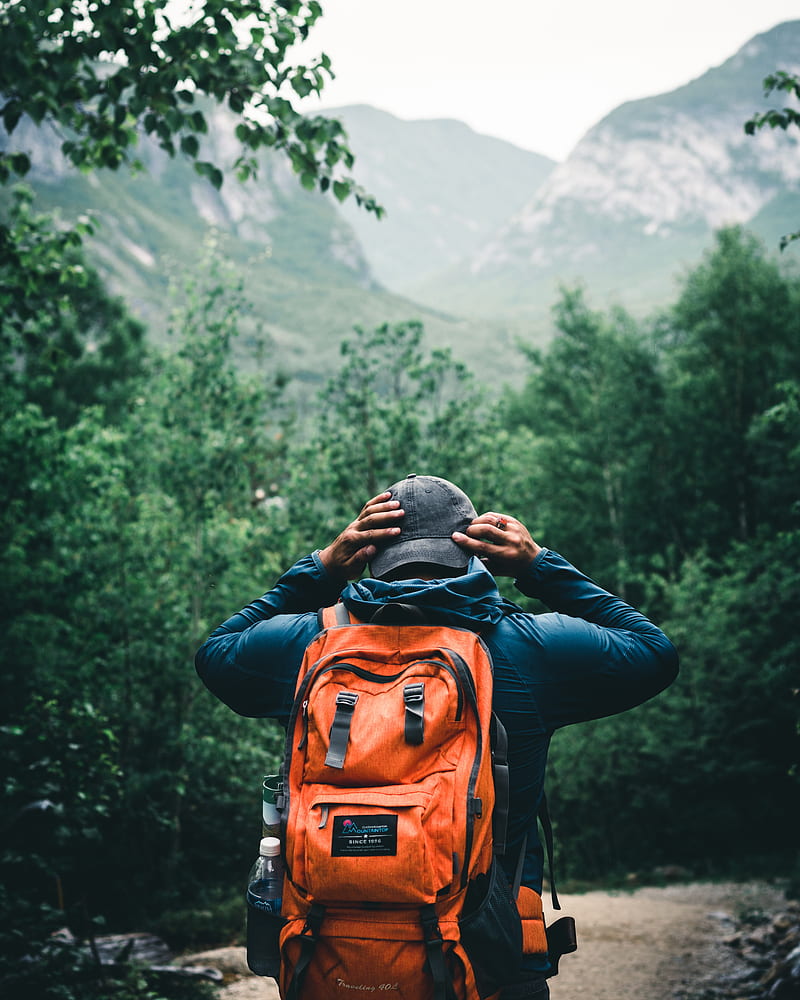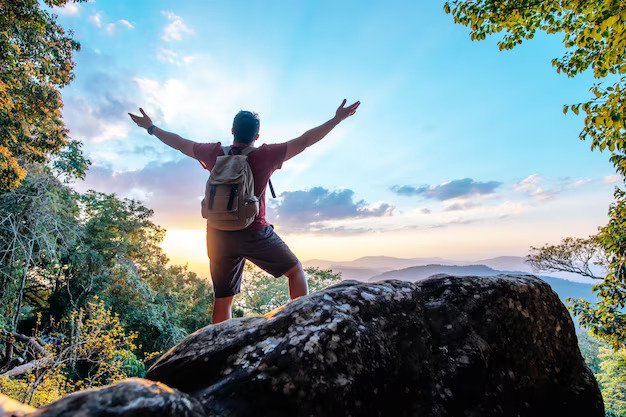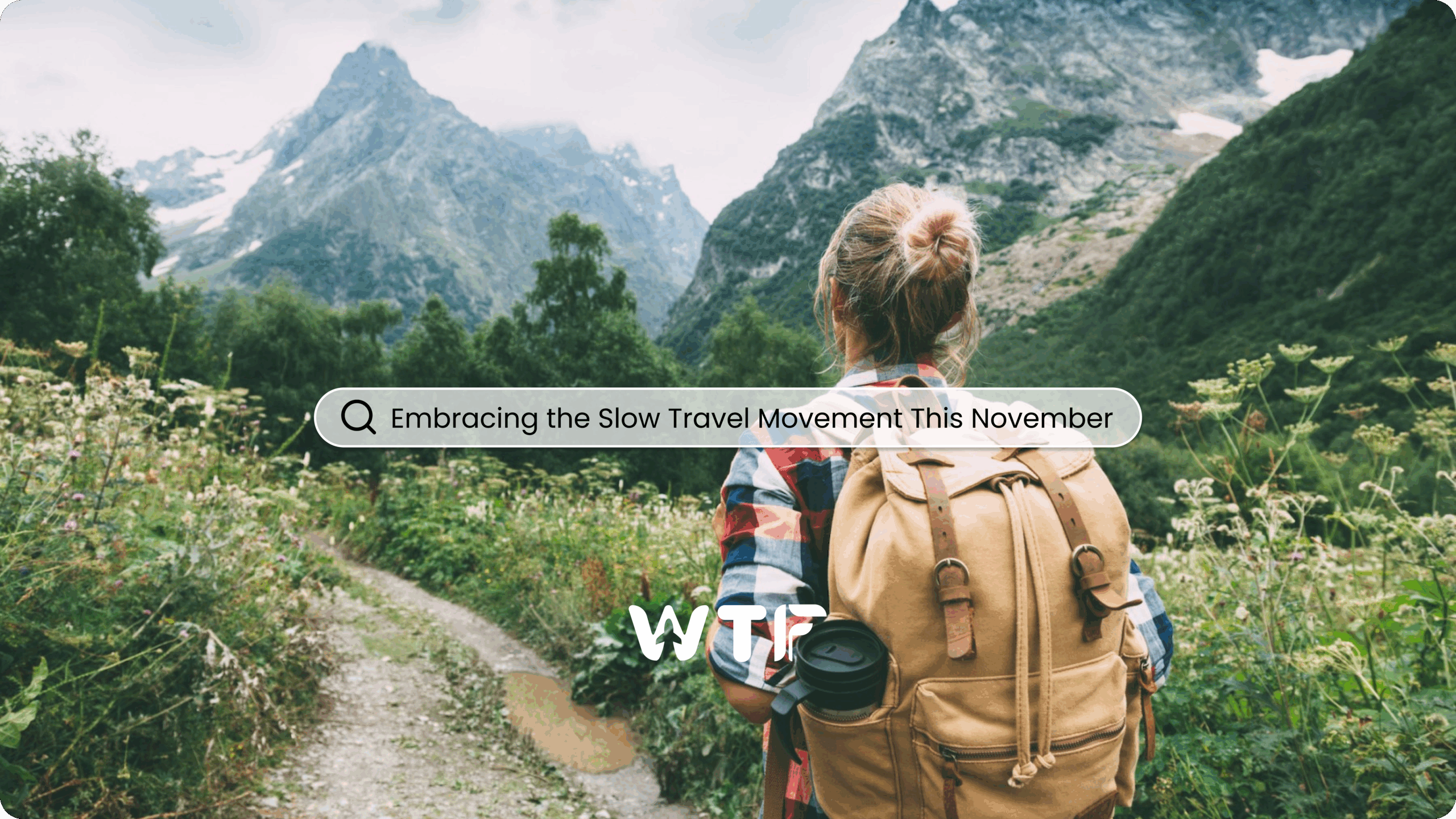In today’s digital age, travel companions in the form of websites and apps have revolutionized the way we explore the world. These digital tools serve as indispensable allies, seamlessly enhancing every aspect of our travel experience. From booking tickets and accommodations to navigating unfamiliar terrain, deciphering foreign languages, discovering local cuisine, and embarking on solo or package tours, travel companions have become our trusted guides, ensuring smooth and memorable journeys. Join me as we delve into the world of travel technology and uncover the myriad ways it can elevate your adventures to new heights.
Context
- Ticket Booking
- Hostel & Homestay Bookings
- Navigation
- Language
- Food
- Communication to back Home- Telecom
- Tours: Solo / Package
Travel companions, such as websites and apps, offer unparalleled convenience and efficiency in various aspects of travel. When it comes to ticket booking, these platforms enable travelers to compare prices, check schedules, and secure tickets for flights, trains, and buses with just a few clicks. Similarly, for accommodation, travelers can effortlessly browse through a wide range of options, from budget-friendly hostels to luxurious hotels, reading reviews and booking instantly. Navigation apps provide real-time directions, offline maps, and traffic updates, making it easy to explore unfamiliar destinations. Language translation apps break down communication barriers, facilitating interactions with locals and enhancing cultural experiences. Digital dining companions offer restaurant recommendations, menu reviews, and reservation options, ensuring memorable culinary experiences. Whether traveling solo or opting for package tours, these digital tools provide tailored solutions, from safety tips for independent travelers to curated itineraries and expert guides for guided adventures. Overall, travel companions simplify the entire travel experience, allowing travelers to navigate seamlessly and make the most of their journeys.
1. Securing Your Ticket: Which Booking Platform Offers the Best Features for Travelers?
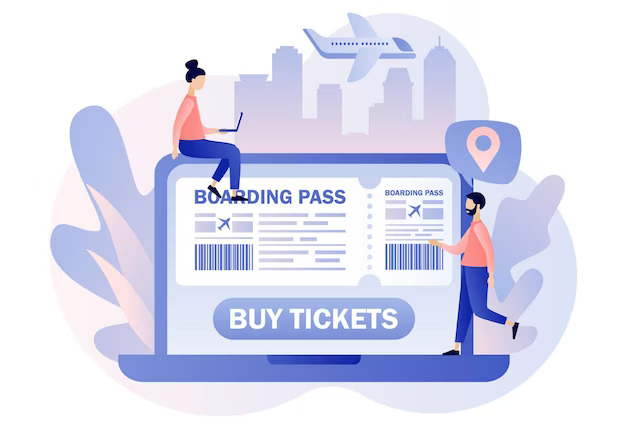
When it comes to booking transportation for travel, several platforms stand out for their user-friendly interfaces and robust features. Here’s a detailed overview of some of the top websites and apps, along with tips on finding cheap tickets for budget travel:
- Expedia:
- Expedia is a comprehensive travel platform offering flights, hotels, car rentals, and vacation packages.
- Price Comparison: Expedia compares prices from multiple airlines and travel agencies, ensuring users find the best deals on cheap flights.
- Flexible Date Options: Users can easily view prices for different dates with Expedia’s flexible date search feature, allowing for cost-effective travel planning.
- Loyalty Programs: Expedia offers its own loyalty program called Expedia Rewards, where users can earn points on bookings and redeem them for discounts on future travel.
- Budget Travel Tip: To find cheaper flights on Expedia, consider using their ‘Deals’ section or signing up for their email newsletter to receive exclusive promotions and discounts.
- Skyscanner:
- Skyscanner is a leading global travel search engine that compares prices for flights, hotels, and car rentals.
- Price Comparison: Skyscanner scours the web to find the lowest prices from airlines, online travel agencies, and booking websites, offering budget-friendly fares.
- Flexible Date Options: The platform allows users to search for flights across an entire month or even a year to identify the cheapest travel dates for low-cost tickets.
- Loyalty Programs: While Skyscanner doesn’t have its own loyalty program, it directs users to airlines’ and hotels’ loyalty programs for potential savings on cheap flights.
- Budget Travel Tip: Set up price alerts on Skyscanner for specific routes and dates to receive notifications when prices drop, enabling you to book cheap flights and save money.
- Kayak:
- Kayak is a popular travel search engine that helps users find and compare prices for flights, hotels, rental cars, and vacation packages.
- Price Comparison: Kayak aggregates prices from hundreds of travel sites, allowing users to easily compare options and find the best deals on cheap flights.
- Flexible Date Options: With Kayak’s flexible search feature, users can explore different travel dates to find lower fares and budget-friendly fares.
- Loyalty Programs: While Kayak doesn’t have its own loyalty program, it provides information on loyalty programs offered by airlines and hotels for potential savings on low-cost tickets.
- Budget Travel Tip: Use Kayak’s ‘Explore’ feature to discover destinations within your budget by setting a maximum price limit and exploring options within that range.
- Google Flights:
- Google Flights is a powerful flight search tool that helps users find and book flights with ease.
- Price Comparison: Google Flights displays prices from various airlines and online travel agencies, allowing users to compare options effortlessly and find cheap flights.
- Flexible Date Options: The platform offers a flexible date grid and price graph, enabling users to visualize price fluctuations and identify the cheapest travel dates for budget-friendly fares.
- Loyalty Programs: While Google Flights doesn’t have its own loyalty program, it provides information on airlines’ frequent flyer programs for potential mileage benefits on cheap tickets.
- Budget Travel Tip: Utilize Google Flights’ ‘Explore Destinations’ feature to discover cheap flight options by setting your departure city and desired travel dates, then exploring destinations within your budget.
2. Finding Your Perfect Stay: Which Hotel Booking Platform Offers the Best Features for Travelers?
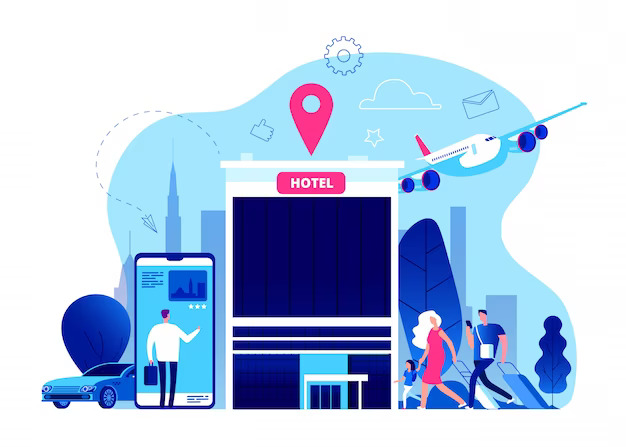
By utilizing these platforms and alternative strategies, travelers can find budget-friendly accommodations and navigate lodging options effectively, even in countries where certain apps or websites may not be accessible. Additionally, seeking advice from fellow travelers, local residents, or tourism authorities can provide valuable insights and recommendations for lodging options tailored to individual preferences and travel needs.
- Hostelworld:
- Hostelworld is a leading platform for booking budget-friendly accommodations such as hostels and guesthouses worldwide.
- User Reviews: Hostelworld provides detailed user reviews and ratings for each property, allowing travelers to make informed decisions based on the experiences of past guests.
- Location Preferences: Users can filter accommodations based on location preferences, such as city center, proximity to public transportation, or specific neighborhoods.
- Amenities: Hostelworld lists amenities offered by each property, including free Wi-Fi, breakfast, common areas, and facilities like laundry and kitchens.
- Safety Features: While safety features vary by property, Hostelworld encourages hostels to maintain high safety standards and provides guidelines for secure bookings.
- Airbnb:
- Airbnb offers a wide range of budget-friendly accommodations, including homestays, private rooms, and entire apartments or houses, in countries around the world.
- User Reviews: Airbnb features user reviews and ratings for each listing, allowing travelers to assess the quality and suitability of accommodations based on the experiences of previous guests.
- Location Preferences: Users can specify location preferences, such as neighborhood, proximity to attractions, or amenities like public transportation.
- Amenities: Airbnb listings detail amenities provided by hosts, such as Wi-Fi, kitchen facilities, parking, and additional services like airport transfers or guided tours.
- Safety Features: Airbnb implements safety measures such as verified profiles, secure payment processing, and host guarantee protection for added peace of mind.
- Booking.com:
- Booking.com offers a diverse selection of budget-friendly accommodations, including hotels, hostels, guesthouses, and homestays, across countries worldwide.
- User Reviews: Booking.com features extensive user reviews and ratings for each property, providing valuable insights into the quality and reliability of accommodations.
- Location Preferences: Users can search for accommodations based on location preferences, such as proximity to landmarks, attractions, or specific neighborhoods.
- Amenities: Booking.com lists amenities offered by each property, ranging from essential facilities like Wi-Fi and air conditioning to additional services like airport shuttle or bicycle rental.
- Safety Features: While safety standards vary by property, Booking.com ensures secure bookings through verified reviews, secure payment processing, and customer support assistance.
- Couchsurfing:
- Couchsurfing connects travelers with local hosts offering free accommodations, including couches, spare rooms, or even entire homes, in countries worldwide.
- User Reviews: Couchsurfing features user reviews and references for hosts and guests, enabling members to build trust and establish connections within the community.
- Location Preferences: Users can search for hosts based on location preferences, interests, and compatibility factors to find suitable matches for their travel needs.
- Amenities: Couchsurfing accommodations vary by host and may range from basic amenities like Wi-Fi and shower facilities to additional offerings such as meals, guided tours, or cultural exchanges.
- Safety Features: Couchsurfing prioritizes safety through identity verification, member references, and community guidelines to ensure positive and respectful interactions between hosts and guests.
Survival Tips:
- In countries where these platforms may not be available or widely used, consider alternative accommodation options such as guesthouses, budget hotels, or local hostels.
- Utilize offline resources such as guidebooks, tourist information centers, and local travel agencies to find budget-friendly accommodations and arrange bookings.
- Join online travel forums, social media groups, or community websites where travelers share tips and recommendations for budget accommodations in specific destinations.
- Be open to spontaneous opportunities, such as asking locals for recommendations or exploring less touristy areas where accommodations may be more affordable.
- Prioritize safety and security by researching neighborhoods, reading reviews, and trusting your instincts when choosing accommodations, especially in unfamiliar destinations.
3. Navigating Your Journey: Which Navigation App Offers the Best Features for Travelers?
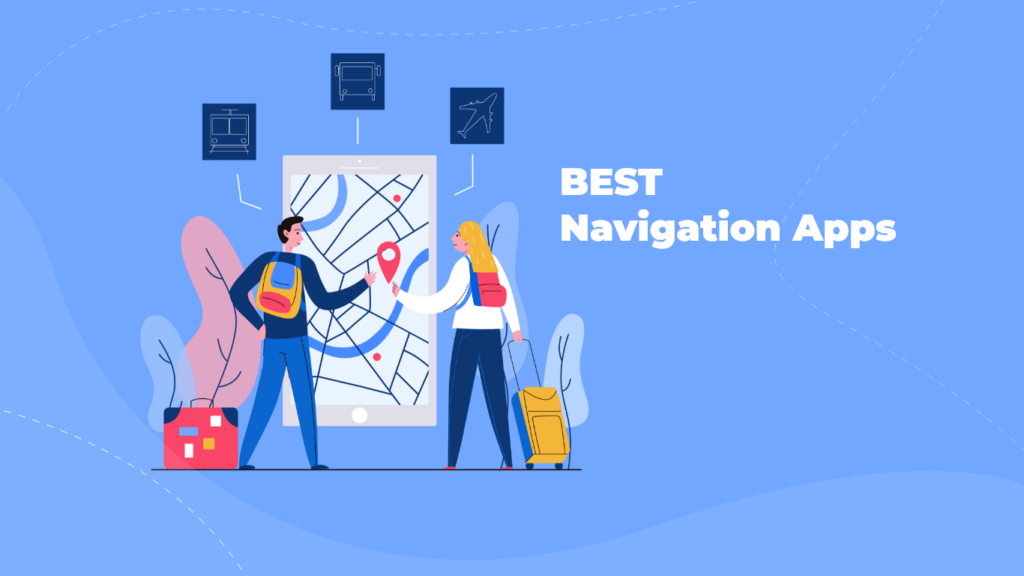
These detailed insights into each navigation app’s unique features demonstrate how they cater to different user needs and preferences, providing travelers with comprehensive tools to navigate effectively and enhance their travel experiences.
Google Maps:
- Local Recommendations: Google Maps employs algorithms that analyze user behavior and preferences to offer personalized recommendations. These recommendations cover a wide range of categories, including restaurants, cafes, attractions, events, and more. By tapping into Google’s vast database of user reviews and ratings, travelers can discover highly-rated establishments and hidden gems tailored to their tastes and interests.
- Offline Features: Google Maps’ offline functionality is robust and versatile. Users can download maps for entire regions, countries, or specific areas to access offline turn-by-turn navigation, search for locations, and even get information about businesses and points of interest. Additionally, users can save specific locations, such as hotels or attractions, for offline access, ensuring seamless navigation even without an internet connection.
- Real-Time Transit Crowdedness: Leveraging data from participating public transportation agencies, Google Maps provides real-time information on transit crowdedness. This feature helps travelers make informed decisions about their commute, allowing them to avoid crowded vehicles and choose less congested routes, especially during peak hours or in densely populated areas.
- Integration with Google Pay: Google Maps integrates with Google Pay to streamline the payment process for public transportation fares and parking fees. In supported cities, users can link their Google Pay account to their transit card or purchase tickets directly within the app. This integration eliminates the need for separate payment methods and enhances the overall convenience of using public transportation.
Maps.me:
- Community Contributions: Maps.me relies on contributions from its user community to maintain and update its maps. Users can edit and add details to maps, such as new roads, trails, points of interest, and landmarks. This collaborative approach ensures that maps remain accurate and up-to-date, particularly in remote or less-mapped areas where official data may be scarce.
- Custom Map Layers: Maps.me offers customizable map layers that cater to specific interests or activities. Users can toggle layers on and off to display information such as hiking trails, cycle paths, viewpoints, and tourist attractions. This feature allows outdoor enthusiasts to plan their adventures more effectively and explore off-the-beaten-path destinations with confidence.
- Incident Reporting: Maps.me empowers users to report incidents directly within the app, such as road closures, accidents, or hazards. By leveraging crowdsourced information, Maps.me creates a dynamic and responsive mapping environment where users can stay informed about potential disruptions and adjust their travel plans accordingly.
- Privacy-Focused: Maps.me prioritizes user privacy by implementing measures to protect personal data. The app offers an opt-in model for data sharing, allowing users to choose whether to share their location data with the platform. Additionally, Maps.me anonymizes user location data to safeguard user privacy while still providing essential navigation features.
Citymapper:
- Multimodal Trip Planning: Citymapper excels in multimodal trip planning, offering seamless integration of different transportation modes. Users can input their starting point and destination, and Citymapper generates a comprehensive itinerary that combines walking, cycling, public transit, and ride-sharing services. This holistic approach ensures that users have access to the most efficient routes tailored to their preferences and needs.
- Real-Time Departure Alerts: Citymapper provides real-time departure alerts to users, leveraging transit data and traffic information to optimize travel times. By analyzing current conditions and estimating travel times, Citymapper notifies users when it’s time to leave for their next transit connection, ensuring they arrive at their destination punctually.
- Integration with Micromobility Services: Citymapper integrates with micromobility services such as bike-sharing and scooter-sharing platforms. Users can locate nearby vehicles, check availability, and unlock them directly within the app, seamlessly incorporating these options into their multimodal journeys.
- Hyperlocal Weather Forecasts: Citymapper offers hyperlocal weather forecasts tailored to specific locations and transit routes. By providing real-time weather information along with transit schedules, Citymapper helps users plan their journeys more effectively, taking into account potential weather-related disruptions or delays.
4. Breaking Language Barriers: Which Translation App Offers the Ultimate Features for Global Explorers?

These language translation apps not only facilitate communication but also enrich the travel experience by promoting cultural exchange and understanding. From navigating foreign cities to forging connections with locals, these apps empower travelers to engage with the world in meaningful ways, fostering unforgettable experiences and lasting memories.
- Introducing Language Translation Apps:
- Language translation apps have become indispensable tools for travelers, transforming the way people communicate across linguistic barriers.
- By harnessing the power of artificial intelligence and machine learning, these apps offer instant translation of text, speech, and even images, making it easier for travelers to navigate foreign countries and engage with locals.
- Whether deciphering menus, asking for directions, or conversing with new friends, language translation apps empower travelers to connect with people and cultures around the world like never before.
- Exploring Key Features:
- Offline Translation: Offline translation is a game-changer for travelers exploring remote destinations or areas with limited internet access. With downloadable language packs, users can translate text and speech offline, ensuring they can communicate effectively wherever their adventures take them.
- Voice Recognition: Voice recognition technology enables seamless communication by instantly translating spoken words into another language. This feature is particularly handy for spontaneous conversations, allowing travelers to converse naturally without the need for typing or written text.
- Language Learning Resources: Many translation apps go beyond basic translation services to offer language learning resources. From vocabulary drills to grammar guides and cultural insights, these resources help travelers deepen their understanding of a language and culture while on the go.
- Example Platforms:
- Google Translate: Google Translate boasts a vast array of features, including real-time translation, offline capabilities, and support for over 100 languages. Its Conversation Mode allows for fluid bilingual conversations, while the Camera Translation feature can instantly translate text from images captured by the smartphone’s camera.
- Microsoft Translator: Microsoft Translator excels in versatility, offering translation services across various platforms, including mobile devices, desktop computers, and web browsers. Its collaborative translation feature enables users to work together on translations, making it a valuable tool for group travel or collaborative projects.
- iTranslate: iTranslate stands out for its user-friendly interface and comprehensive translation tools. In addition to text and voice translation, it offers a dictionary with synonyms and antonyms, as well as a language detection feature for identifying unfamiliar languages on-the-go. With iTranslate’s Phrasebook feature, users can save commonly used phrases for quick access during conversations.
In regions where standard translation apps may face limitations or restrictions, such as North Korea and other similarly isolated countries, travelers must adapt their communication strategies accordingly. Here’s how travelers can navigate language barriers in such unreachable countries:
- Preparation and Research: Before traveling to a highly restricted destination, conduct thorough research on local customs, cultural norms, and basic phrases. Bring along a physical phrasebook or guidebook that provides essential vocabulary and expressions.
- Local Guides or Interpreters: In countries with limited access to digital tools, hiring a local guide or interpreter can greatly assist with communication. These individuals can provide invaluable insights into local customs, help navigate bureaucratic processes, and act as intermediaries in interactions with locals.
- Language Assistance from Embassies or Consulates: Embassies or consulates of your home country may offer language assistance services or provide interpreters for travelers in need. Contact the relevant diplomatic mission before your trip to inquire about available support.
- Non-Digital Communication Aids: In situations where electronic devices and internet access are restricted, consider using non-digital communication aids such as pen and paper, gestures, or visual aids like maps and images to convey information.
- Cultural Sensitivity and Respect: When communicating with locals in highly restricted countries, approach interactions with cultural sensitivity and respect. Be mindful of local customs, avoid sensitive topics, and adhere to any regulations or restrictions imposed by the authorities.
- Learn Basic Korean Phrases: In the case of North Korea, learning basic Korean phrases can be helpful for simple communication. While access to digital translation apps may be limited within the country, having a foundation in the local language can facilitate basic interactions and demonstrate goodwill towards locals.
- Exercise Caution and Awareness: In highly restricted countries, exercise caution when communicating and interacting with locals, as conversations may be monitored, and certain topics may be sensitive or prohibited. Be mindful of local laws and regulations to avoid inadvertently violating restrictions.
By adopting these strategies and approaches, travelers can navigate language barriers and communicate effectively in highly restricted destinations, fostering meaningful interactions and enhancing their overall travel experience despite the absence of standard translation apps.
5. Feasting on Global Delights: Which Food Discovery App Satisfies Every Palate and Budget?

Are you a passionate foodie or a traveler eager to explore the culinary wonders of new destinations? Look no further than the world of food discovery apps, where you can embark on a gastronomic journey filled with delightful flavors, hidden gems, and budget-friendly eats. These apps are your trusted companions for discovering local cuisine, top-rated restaurants, and bustling food markets, ensuring that every meal is a memorable experience.
- Discovering Local Cuisine Apps:
- Embark on a culinary journey with apps designed to uncover the finest local cuisine, restaurants, and food markets worldwide.
- These platforms serve as digital guides, offering insights into diverse culinary landscapes and helping travelers navigate the rich tapestry of global gastronomy.
- Exploring Key Features:
- User Reviews: Tap into the wisdom of the crowd with user-generated reviews, ratings, and photos, providing authentic insights into dining experiences and helping users make informed decisions.
- Menu Recommendations: Discover tantalizing menu recommendations and signature dishes curated by fellow food enthusiasts and local experts, guiding diners to must-try culinary delights.
- Dietary Preferences: Cater to individual dietary preferences and restrictions with customizable filters for vegetarian, vegan, gluten-free, and other dietary options, ensuring a satisfying dining experience for all.
- Reservation Options: Streamline dining arrangements with convenient reservation options, allowing users to secure tables in advance and avoid long wait times during peak hours.
- Example Platforms:
- Yelp: Yelp is a go-to destination for discovering and reviewing local businesses, including restaurants, cafes, and food markets. With millions of user-generated reviews and photos, Yelp offers valuable insights into dining experiences, while its reservation feature simplifies the booking process.
- TripAdvisor: TripAdvisor is renowned for its extensive database of traveler reviews and recommendations, making it a trusted resource for discovering top-rated restaurants and culinary gems worldwide. In addition to user reviews, TripAdvisor offers insights into dining trends, popular dishes, and restaurant rankings.
- OpenTable: OpenTable specializes in restaurant reservations, allowing users to book tables at thousands of restaurants worldwide with ease. Beyond reservations, OpenTable provides user reviews, menu previews, and exclusive dining offers, enhancing the overall dining experience.
- Zomato: Zomato is a global platform for discovering and reviewing restaurants, cafes, and food delivery services. With features like personalized recommendations, menu scanning, and online ordering, Zomato caters to food lovers seeking culinary adventures and gastronomic delights.
- Tips for Budget-Friendly Dining:
- Explore Local Markets: Visit local food markets and street stalls to sample authentic cuisine at affordable prices, immersing yourself in the vibrant culinary culture of your destination.
- Lunch Specials and Happy Hours: Take advantage of lunch specials and happy hour deals offered by restaurants, which often feature discounted prices on select dishes and beverages during off-peak hours.
- Dine Like a Local: Seek out neighborhood eateries and family-owned establishments frequented by locals, where you can enjoy delicious fare at reasonable prices while experiencing the true flavors of the region.
- Use Dining Apps for Deals: Utilize dining apps to discover special offers, discounts, and promotions at participating restaurants, helping you save money while savoring memorable dining experiences.
By leveraging these apps and tips, travelers can embark on culinary adventures, discover hidden culinary treasures, and indulge in delectable cuisine without breaking the bank, enriching their travel experiences with unforgettable flavors and gastronomic delights.
6. Embark on Your Solo or Group Adventure: Explore Top Platforms for Solo and Package Tours
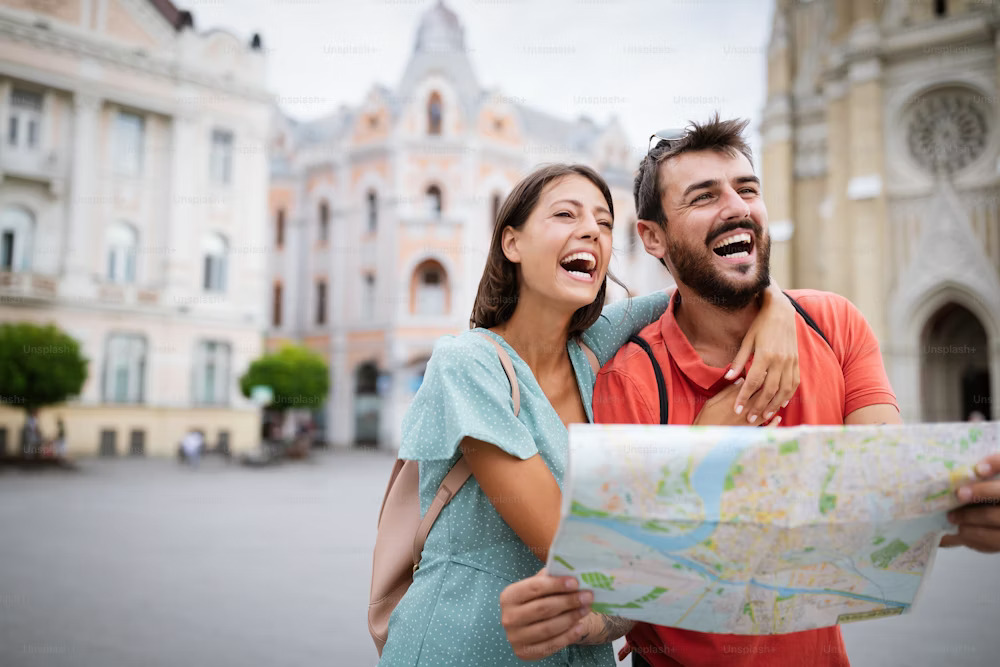
a journey of exploration and discovery with our comprehensive guide to solo and package tours. Whether you’re a solo traveler seeking independence or a group adventurer craving camaraderie, we’ve got you covered with insider tips, expert recommendations, and savvy strategies to make the most of your travels.
For Solo Travelers:
Solo travel offers unparalleled freedom and flexibility, allowing you to tailor your journey to your unique interests and preferences. Platforms like Solo Traveler, Nomad List, and Meetup cater specifically to solo travelers, providing invaluable resources and community engagement opportunities.
- Solo Traveler: Dive into a vibrant online community of solo travelers where you can connect with fellow globetrotters, share experiences, and glean valuable insights and advice.
- Nomad List: Explore comprehensive destination guides and practical tips for digital nomads and solo travelers, including recommendations for remote work opportunities and budget-friendly accommodations.
- Meetup: Join local meetups and group activities organized by like-minded individuals, fostering connections and camaraderie with fellow solo adventurers in your destination of choice.
For Package Tours:
While package tours offer convenience and curated experiences, they may not always align with your budget or travel style. Here are some tips and tricks to save money and avoid unnecessary expenses on package tours:
- Book Early or Last Minute: Take advantage of early booking discounts or last-minute deals offered by tour operators. Booking well in advance or waiting until the last minute can sometimes result in significant savings on package tours.
- Be Flexible with Travel Dates: Flexibility is key when it comes to saving money on package tours. Consider traveling during the shoulder season or off-peak times when tour prices are typically lower and destinations are less crowded.
- Look for Discounts and Promotions: Keep an eye out for special promotions, discounts, and coupon codes offered by tour operators. Sign up for newsletters or follow travel deal websites to stay informed about the latest offers.
- Consider Group Discounts: If traveling with friends or family, inquire about group discounts offered by tour operators. Group bookings often come with discounted rates and additional perks, such as free upgrades or customized itineraries.
- Opt for Budget-Friendly Destinations: Choose destinations that offer good value for money and affordable tour options. Research destinations with favorable exchange rates, low cost of living, and a wide range of budget accommodations and activities.
- Compare Prices and Itineraries: Don’t settle for the first package tour you come across. Take the time to compare prices, itineraries, and inclusions from different tour operators to ensure you’re getting the best value for your money.
By following these tips and tricks, you can maximize your savings and avoid unnecessary expenses when booking package tours, allowing you to enjoy unforgettable adventures without breaking the bank. Whether you’re exploring solo or embarking on a group tour, our guide has everything you need to plan the perfect trip and make lifelong memories along the way.
7. Communication and Saftey Measures
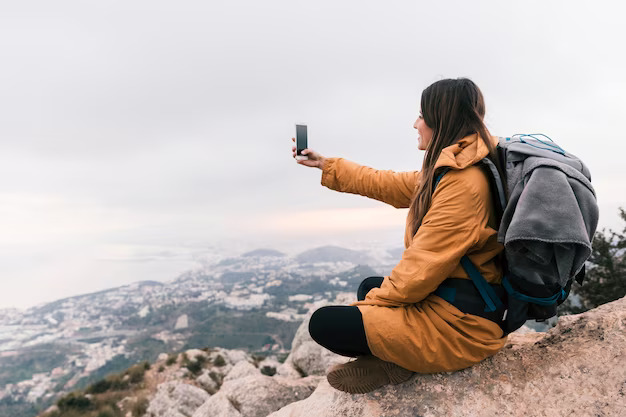
In an ever-connected world, staying safe and connected while traveling solo is paramount. Our comprehensive guide goes beyond the basics, providing detailed insights and strategies to ensure solo travelers are well-prepared for any situation they may encounter on their journey.
Helpline Services and Emergency Contacts:
- Local Authorities: Research the specific emergency numbers for police, fire, and medical services in the countries you’re visiting. Some countries may have different numbers for each service, so ensure you have the correct ones.
- Embassy or Consulate: In addition to knowing the location and contact information, understand the services provided by your embassy or consulate. This may include assistance with legal issues, medical emergencies, or repatriation in extreme cases.
- Medical Assistance Services: Look into the quality of healthcare services available in your destination, especially if you have pre-existing medical conditions. Consider obtaining travel insurance that covers medical evacuation in case of serious emergencies.
Communication with Home and Friends:
- International Calling and Messaging Apps: Utilize popular communication apps such as WhatsApp, Skype, or Viber to stay in touch with family and friends back home. These apps offer affordable or free calling, messaging, and video chat options over Wi-Fi or data networks.
- Email and Social Media: Stay connected through email and social media platforms like Facebook, Instagram, or Twitter. Share updates, photos, and experiences with loved ones to keep them informed about your travels and reassure them of your safety.
- Roaming Services and SIM Cards: Check with your mobile carrier about international roaming plans or purchase a local SIM card upon arrival for access to local networks and data services. This allows for seamless communication without incurring exorbitant roaming charges.
Tips for Getting Help if Lost in a Foreign Country:
- Stay Calm and Alert: Take a moment to assess your surroundings and remain calm. Look for landmarks, street signs, or public transportation options that can help you find your way back.
- Language Barriers: Learn key phrases in the local language for asking for directions, seeking help, or indicating emergencies. Carry a phrasebook or use translation apps with offline capabilities to bridge language barriers.
- Emergency Whistle or Signal: In remote areas or wilderness settings, carry signaling devices such as a whistle, mirror, or flashlight to attract attention in case of emergencies. Learn universal distress signals like SOS for signaling for help.
Additional Safety Tips for Travelers:
- Travel Insurance: Research travel insurance policies carefully to ensure they cover your specific needs, such as medical emergencies, trip cancellations, or evacuation. Understand any exclusions or limitations, and keep a copy of your policy documents easily accessible.
- Local Customs and Laws: Educate yourself about local customs, traditions, and laws to avoid inadvertently offending or violating cultural norms. Respect religious practices, dress codes, and social etiquette to foster positive interactions with locals.
- Emergency Funds: Carry a mix of cash, credit/debit cards, and emergency funds in multiple secure locations. Consider keeping a small amount of local currency for immediate needs and storing larger amounts securely in a hidden money belt or pouch.
Some other tips
- Cultural Etiquette and Sensitivity:
- Greetings and Gestures: Explore common greetings and gestures in different cultures, such as bowing in Japan, the traditional Thai wai, or the handshake in Western countries. Understand the significance of these gestures and how to use them appropriately.
- Dress Codes: Provide insights into appropriate attire for various settings, such as religious sites, formal events, or local customs. Offer tips for dressing modestly and respectfully to avoid unintentional offense.
- Dining Etiquette: Discuss dining customs, such as table manners, tipping practices, and sharing meals in communal settings. Explain cultural norms surrounding food, such as dietary restrictions or taboos.
- Taboos and Off-Limits Topics: Highlight topics or behaviors that may be considered taboo or offensive in certain cultures, such as discussing politics, religion, or sensitive historical events. Encourage travelers to exercise sensitivity and discretion in conversations.
- Health and Wellness on the Road:
- Staying Healthy: Provide practical advice for maintaining health while traveling, including staying hydrated, getting enough rest, and practicing good hygiene. Offer tips for avoiding common travel ailments like traveler’s diarrhea or jet lag.
- Managing Stress: Discuss strategies for managing stress and staying mentally resilient on the road, such as mindfulness practices, journaling, or taking regular breaks. Emphasize the importance of self-care and setting boundaries to prevent burnout.
- Staying Active: Recommend ways to incorporate physical activity into travel routines, such as walking tours, hiking, yoga, or swimming. Highlight the benefits of staying active for both physical health and mental well-being.
- Seeking Medical Assistance: Outline steps for accessing medical care abroad, including finding reputable healthcare providers, understanding insurance coverage, and obtaining necessary medications or treatments.
- Budget Travel Hacks:
- Accommodation: Provide tips for finding budget-friendly accommodation options, such as hostels, guesthouses, or homestays. Discuss alternative accommodations like house sitting, couchsurfing, or camping to save money on lodging.
- Transportation: Explore cost-effective transportation options, such as using public transit, booking budget airlines, or taking advantage of ridesharing services. Discuss strategies for finding cheap flights, bus or train tickets, and local transportation passes.
- Dining: Offer suggestions for eating on a budget, such as cooking meals in hostel kitchens, opting for street food or local markets, or seeking out lunch specials or happy hour deals at restaurants. Emphasize the value of exploring local cuisine affordably.
- Activities and Attractions: Recommend free or low-cost activities and attractions in various destinations, such as museums with free admission days, scenic hikes, self-guided walking tours, or cultural festivals. Encourage travelers to prioritize experiences that align with their interests without breaking the bank.
- Sustainable Travel Practices:
- Reduce Waste: Offer tips for minimizing waste while traveling, such as carrying a reusable water bottle, using eco-friendly toiletries, and avoiding single-use plastics. Discuss the importance of proper waste disposal and recycling in different destinations.
- Support Local Communities: Highlight the benefits of supporting local businesses, artisans, and tour operators to contribute positively to the local economy. Encourage travelers to seek out sustainable tourism initiatives, community-based tourism projects, or fair-trade products.
- Responsible Wildlife Tourism: Discuss ethical considerations for interacting with wildlife, such as avoiding attractions that exploit animals for entertainment or choosing responsible wildlife tours that prioritize conservation and animal welfare.
- Reduce Carbon Footprint: Provide strategies for reducing carbon emissions while traveling, such as opting for eco-friendly transportation, offsetting carbon footprint through reputable programs, or choosing accommodations with green certifications.
- Solo Female Travel Safety:
- Pre-Trip Preparation: Offer practical safety tips for solo female travelers, such as researching destination safety, sharing itineraries with trusted contacts, and carrying self-defense items like a personal alarm or whistle.
- Awareness and Intuition: Encourage women to trust their instincts and stay vigilant while traveling alone. Discuss strategies for staying aware of surroundings, avoiding risky situations, and asserting boundaries when needed.
- Connect with Other Women: Highlight the benefits of connecting with other female travelers or joining women-only travel groups for added safety and camaraderie. Recommend resources for finding female-friendly accommodations or group tours.
- Cultural Sensitivity: Discuss cultural differences in gender norms and expectations, and offer guidance on navigating these dynamics respectfully. Encourage women to research local customs and dress codes to avoid unwanted attention or misunderstandings.
Wanderer’s Word
Join the digital travel revolution and unlock the full potential of your adventures by exploring and utilizing these travel companion apps and websites. Share your favorite tools and discoveries with fellow travelers in the comments section or on social media, and invite others to join the conversation.
To get started, download the featured apps and visit the websites mentioned in this guide:
- Expedia
- Skyscanner
- Kayak
- Google Flights
- Hostelworld
- Airbnb
- Booking.com
- Couchsurfing
- Google Maps
- Maps.me
- Citymapper
With these tools at your disposal, embark on your next journey with confidence, knowing that you have everything you need to make your trip memorable, enjoyable, and stress-free. Happy travels!
